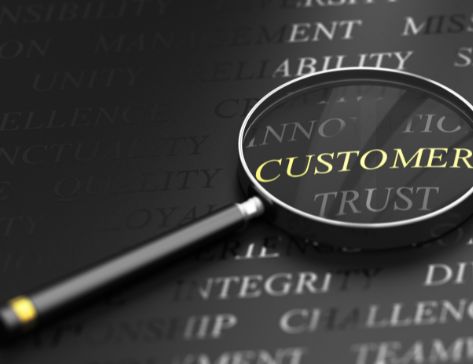
Building an Effective Customer-Centric Data Strategy for Business Growth
Building an effective customer-centric data strategy is essential for businesses looking to thrive in today’s competitive marketplace. By placing customers at the heart of your data initiatives, organizations can create personalized experiences, anticipate needs, and foster lasting relationships that drive growth. This comprehensive guide explores how to develop and implement a data strategy that truly puts customers first while delivering measurable business results.
In an era where customer expectations continue to evolve rapidly, companies must leverage data intelligently to stay relevant. A customer-centric approach to data management enables businesses to move beyond traditional product-focused models toward solutions that address genuine customer needs. This shift requires not just technological investment but a fundamental rethinking of how organizations collect, analyze, and activate customer data.

Understanding Customer-Centric Data Strategy
A customer-centric data strategy is a framework that organizes how a company collects, manages, analyzes, and applies customer data to improve business outcomes while enhancing customer experiences. Unlike traditional data approaches that focus primarily on operational efficiency, a customer-centric strategy places customer needs, behaviors, and preferences at its core.
The fundamental difference lies in perspective: rather than viewing data as merely a business asset, customer-centric organizations see it as a means to understand and serve customers better. This approach recognizes that customer data represents real people with unique needs, preferences, and journeys.
Key Components of a Customer-Centric Data Strategy
- Unified Customer Data: Integration of data from multiple touchpoints to create comprehensive customer profiles
- Actionable Insights: Analysis capabilities that transform raw data into meaningful customer understanding
- Privacy and Compliance: Robust frameworks for responsible data handling and regulatory adherence
- Cross-Functional Alignment: Shared customer data access across departments with appropriate governance
- Measurement Framework: Clear metrics that track both customer experience and business outcomes
Steps to Build Your Customer-Centric Data Strategy
1. Audit Your Current Data Landscape
Begin by assessing your existing data environment. Identify what customer data you currently collect, where it resides, who has access to it, and how it flows through your organization. This audit should reveal gaps, redundancies, and opportunities for improvement in your data infrastructure.
Key questions to address include:
- What customer data sources exist across your organization?
- How fragmented is your customer data across systems?
- What data quality issues exist in your current datasets?
- How accessible is customer data to teams that need it?
2. Define Clear Customer-Focused Objectives
Establish specific, measurable goals for your data strategy that connect directly to customer outcomes. These objectives should align with broader business goals while maintaining a clear focus on customer experience improvement.
Examples of customer-centric data objectives include:
- Reducing customer churn by 15% through predictive analytics
- Increasing customer lifetime value by personalizing the customer journey
- Improving customer satisfaction scores by identifying and addressing pain points
- Enhancing real-time personalization capabilities across digital touchpoints
3. Create a Unified Customer Data Platform
Implement a centralized system that consolidates customer data from various sources into comprehensive, accessible profiles. This unified view enables teams across the organization to work from a single source of truth regarding customer information.
Essential elements of an effective customer data platform include:
- Identity resolution capabilities to connect data points to specific customers
- Real-time data processing for timely customer interactions
- Segmentation tools for targeted marketing and service initiatives
- Integration with customer-facing systems for seamless experiences
4. Establish Data Governance with Customer Privacy at the Center
Develop robust governance frameworks that protect customer data while enabling its effective use. This includes clear policies for data collection, storage, access, and deletion that respect customer privacy preferences and comply with relevant regulations.
Critical governance components include:
- Transparent data collection practices with clear customer consent
- Role-based access controls for customer data
- Data retention policies that balance business needs with privacy concerns
- Regular privacy impact assessments for new data initiatives
5. Implement Advanced Analytics Capabilities
Deploy analytics tools and methodologies that transform raw customer data into actionable insights. These capabilities should enable both strategic decision-making and operational improvements that enhance customer experiences.
Key analytics approaches include:
- Predictive modeling to anticipate customer needs and behaviors
- Sentiment analysis to understand customer emotions and feedback
- Journey analytics to identify friction points and opportunities
- Attribution modeling to understand which touchpoints drive customer actions
6. Activate Data Across Customer Touchpoints
Ensure that customer insights are accessible and actionable at every customer interaction point. This requires integrating your data platform with customer-facing systems and empowering frontline employees with relevant customer information.
Effective data activation includes:
- Real-time personalization engines for digital experiences
- Customer service dashboards that display relevant customer context
- Marketing automation systems that leverage customer segments and behaviors
- Sales enablement tools that provide customer insights to representatives
7. Measure Impact and Continuously Improve
Establish metrics that track both the performance of your data strategy and its impact on customer outcomes. Use these measurements to refine your approach continuously and ensure ongoing alignment with customer needs.
Effective measurement frameworks include:
- Customer experience metrics (NPS, CSAT, CES)
- Business impact metrics (retention, LTV, conversion rates)
- Data quality and utilization metrics
- Return on investment calculations for data initiatives
Overcoming Common Challenges
Data Silos and Integration Issues
Many organizations struggle with fragmented customer data across departments and systems. Breaking down these silos requires both technical solutions and cultural changes:
- Implement API-based integration between systems
- Establish cross-functional data teams with shared objectives
- Create incentives for data sharing across departments
- Standardize customer identifiers across platforms
Balancing Personalization with Privacy
As data collection capabilities expand, organizations must navigate the tension between personalization and privacy concerns. Successful approaches include:
- Adopting privacy-by-design principles in all data initiatives
- Providing transparent opt-in/opt-out mechanisms for customers
- Focusing on value exchange—ensuring customers receive clear benefits for shared data
- Using aggregated and anonymized data where possible
Organizational Resistance
Shifting to a customer-centric data approach often encounters resistance from teams accustomed to traditional methods. Address this challenge by:
- Securing executive sponsorship for customer-centric initiatives
- Demonstrating early wins through pilot projects
- Providing training and resources for teams adapting to new approaches
- Celebrating and recognizing customer-focused data innovations
Future Trends in Customer-Centric Data Strategy
The landscape of customer data continues to evolve rapidly. Forward-thinking organizations should prepare for emerging trends including:
- Zero-Party Data: Increasing focus on information customers intentionally share
- AI-Driven Insights: Advanced machine learning models that identify subtle patterns in customer behavior
- Decentralized Identity: New approaches that give customers more control over their data
- Contextual Privacy: Frameworks that adapt privacy practices to specific customer contexts
- Predictive Experience Design: Using data to anticipate and design for future customer needs
Conclusion
Building an effective customer-centric data strategy represents a significant competitive advantage in today’s business environment. By systematically collecting, analyzing, and activating customer data, organizations can create more meaningful experiences, develop stronger relationships, and drive sustainable growth.
The journey toward customer-centricity is ongoing, requiring continuous adaptation as technologies evolve and customer expectations shift. Organizations that commit to this approach—placing customers at the center of their data initiatives—will be well-positioned to thrive in an increasingly data-driven marketplace. By implementing the right tools and technologies for data collection and analysis, companies can transform customer insights into tangible business value while building lasting customer loyalty.
Key Takeaway: A successful customer-centric data strategy balances technological capabilities with human understanding, creating a framework that respects customer privacy while delivering personalized experiences that genuinely address customer needs.


